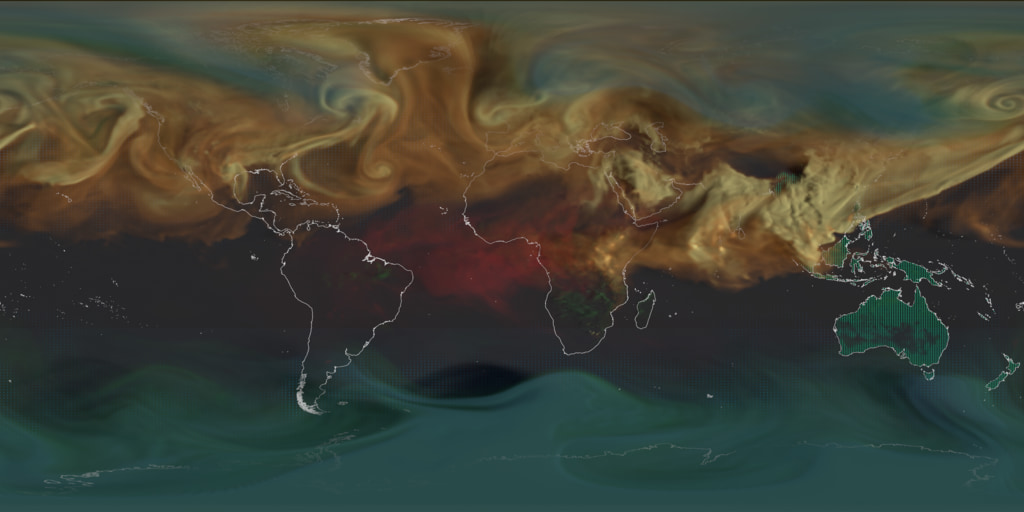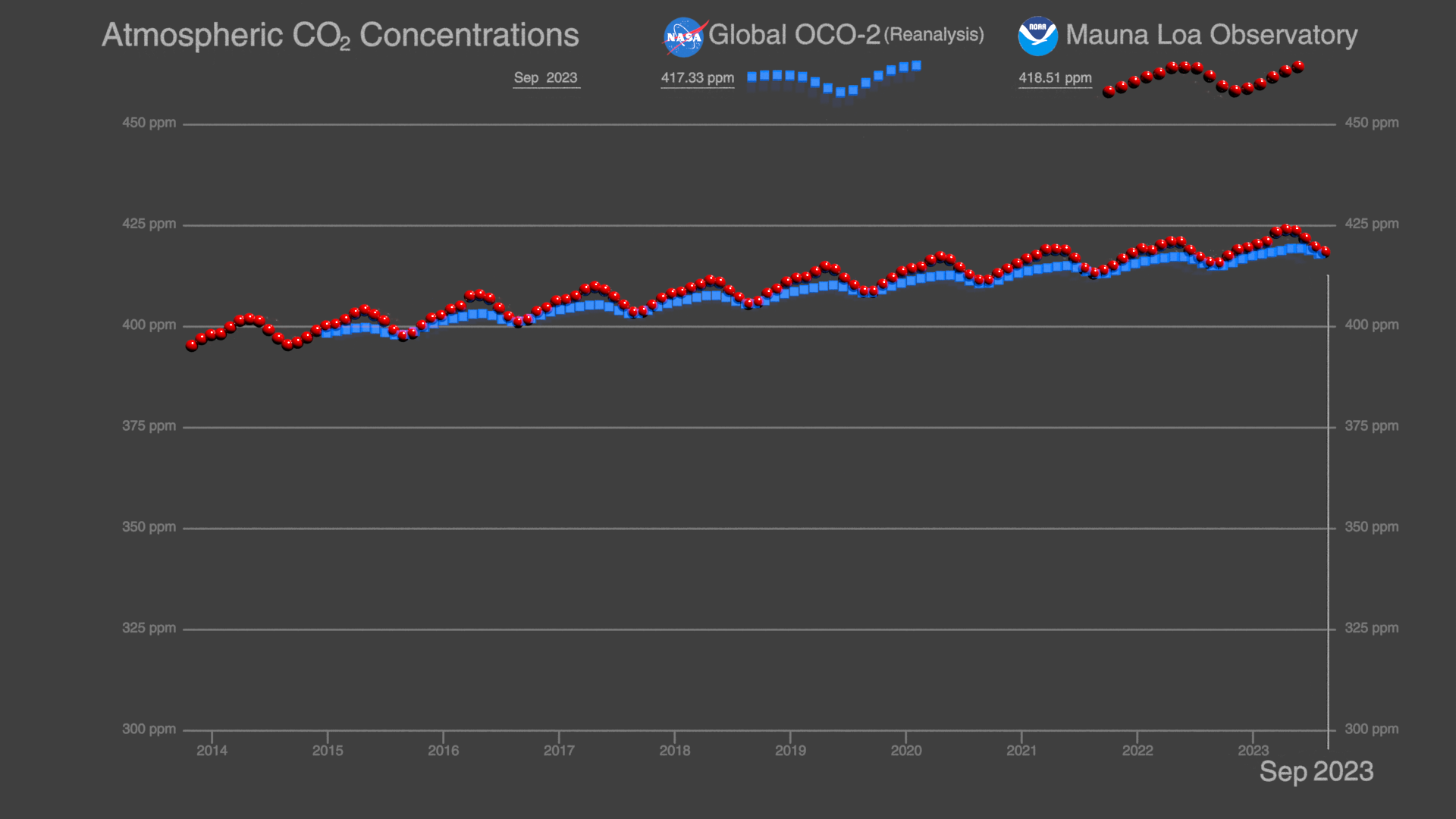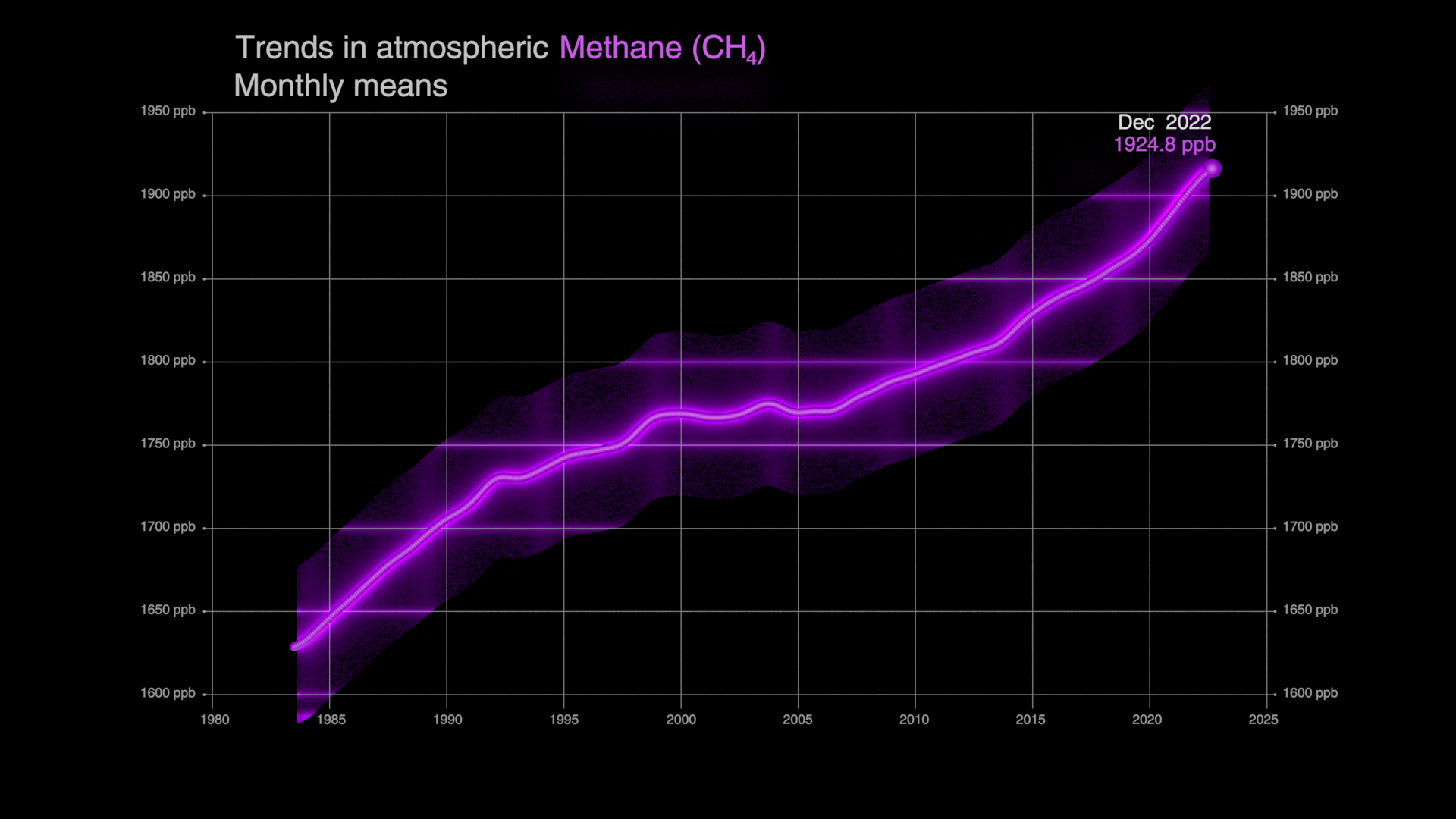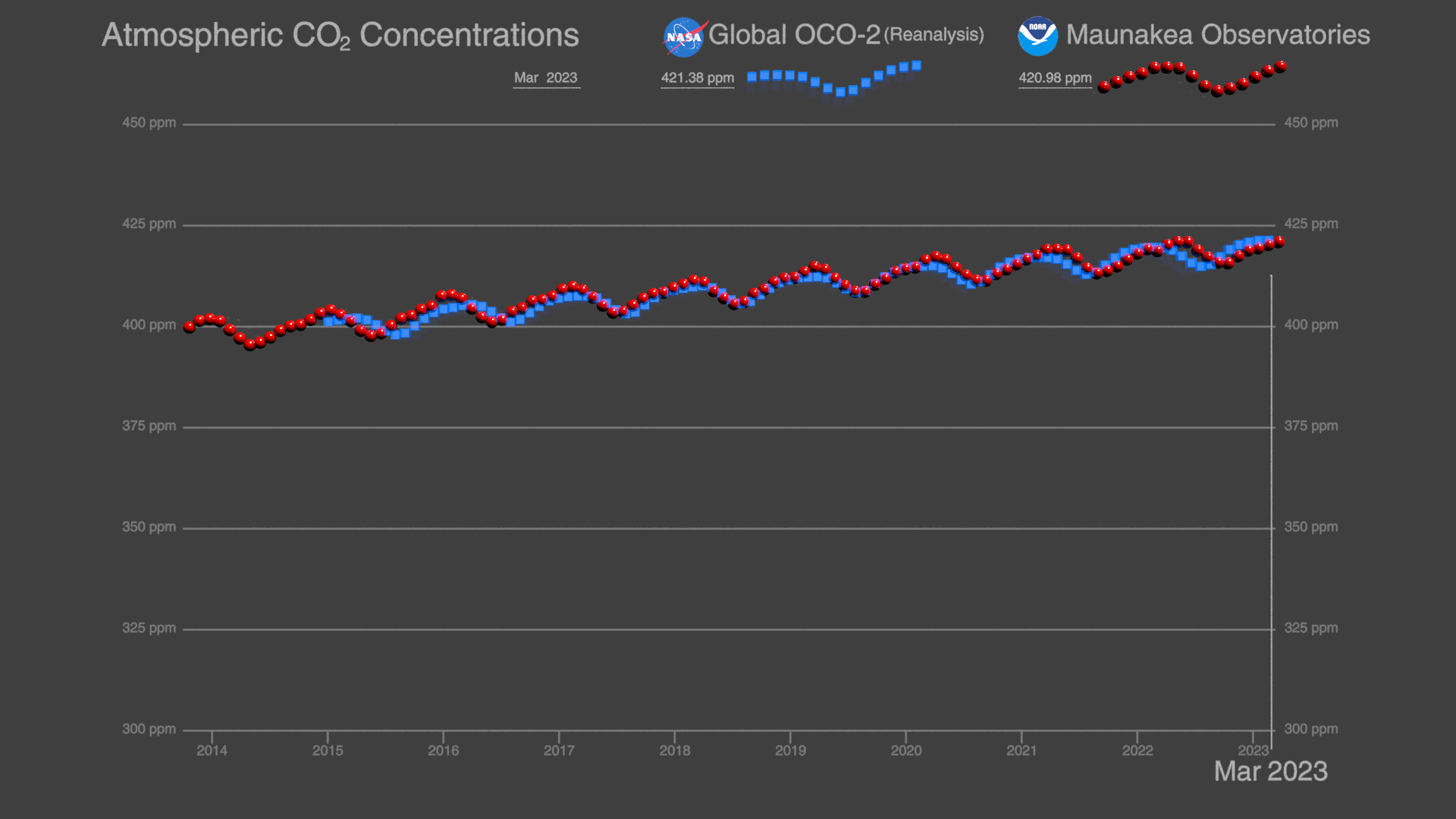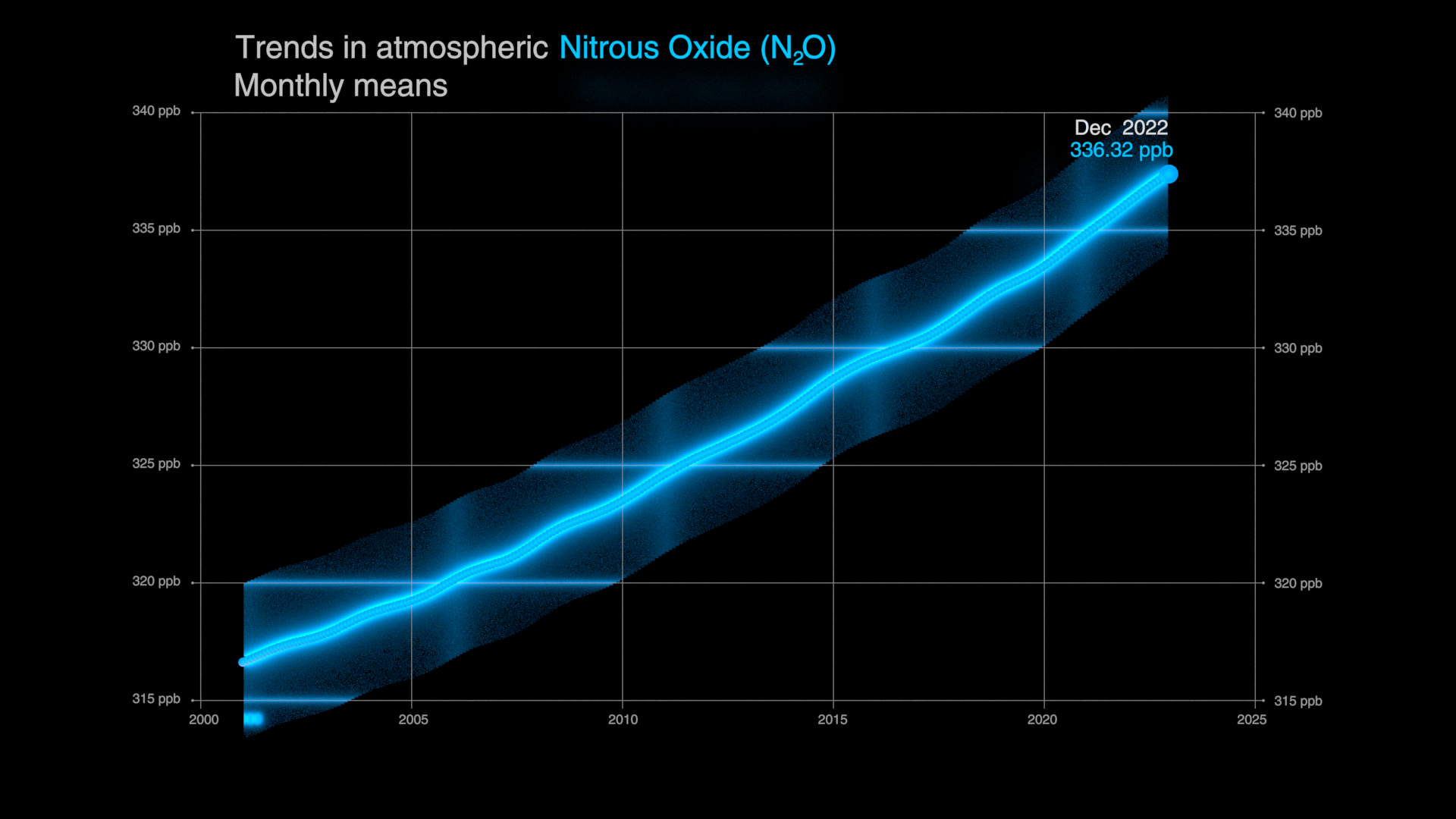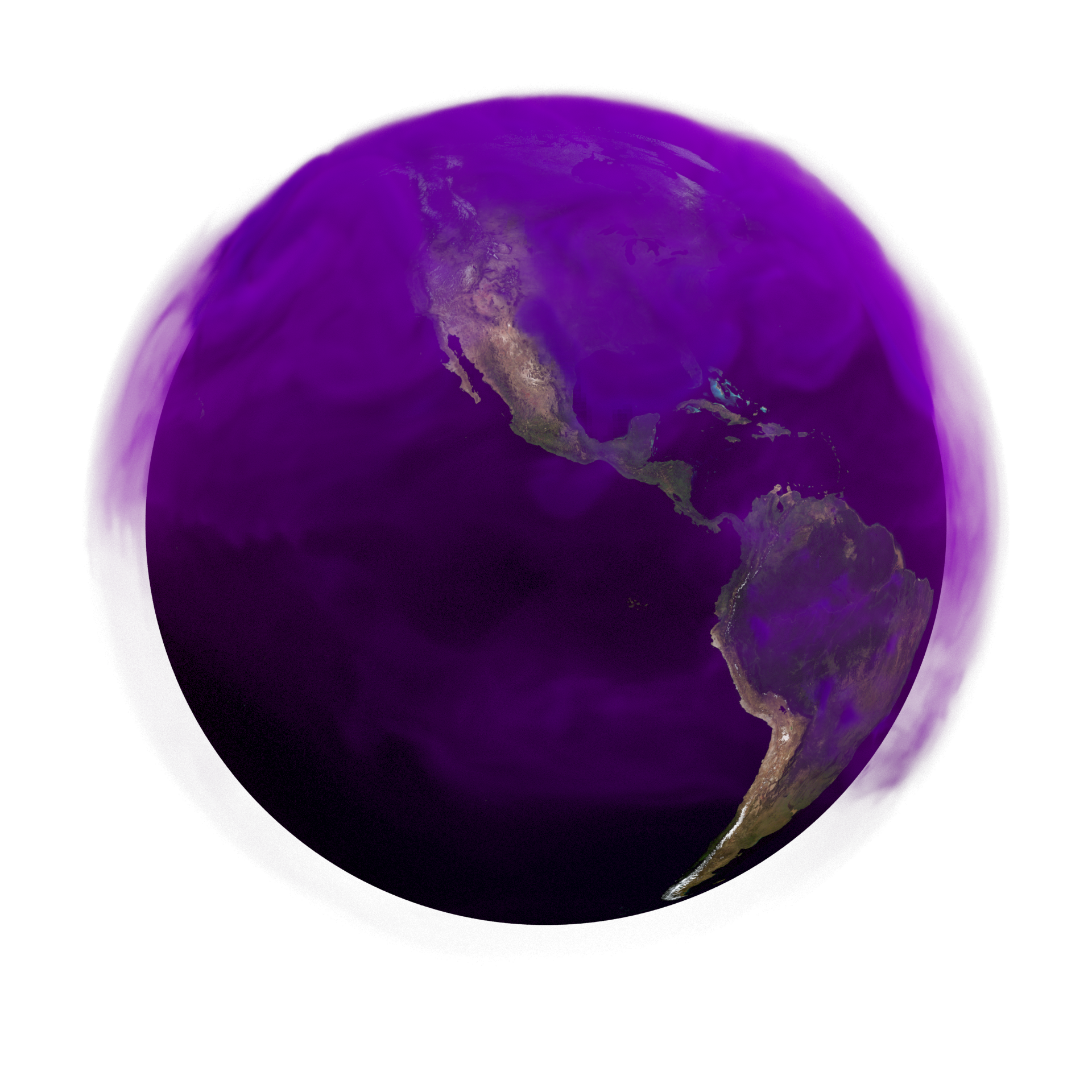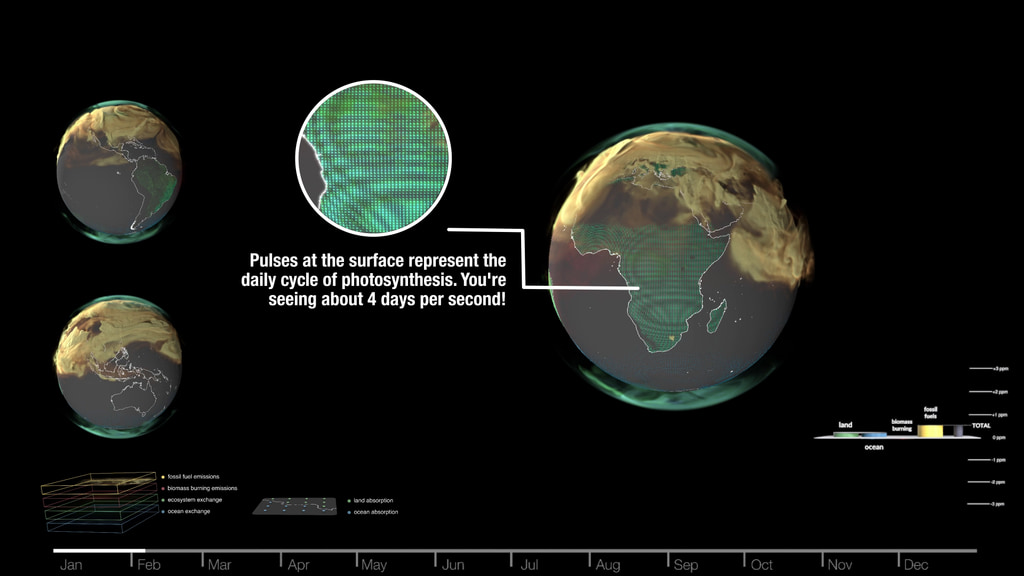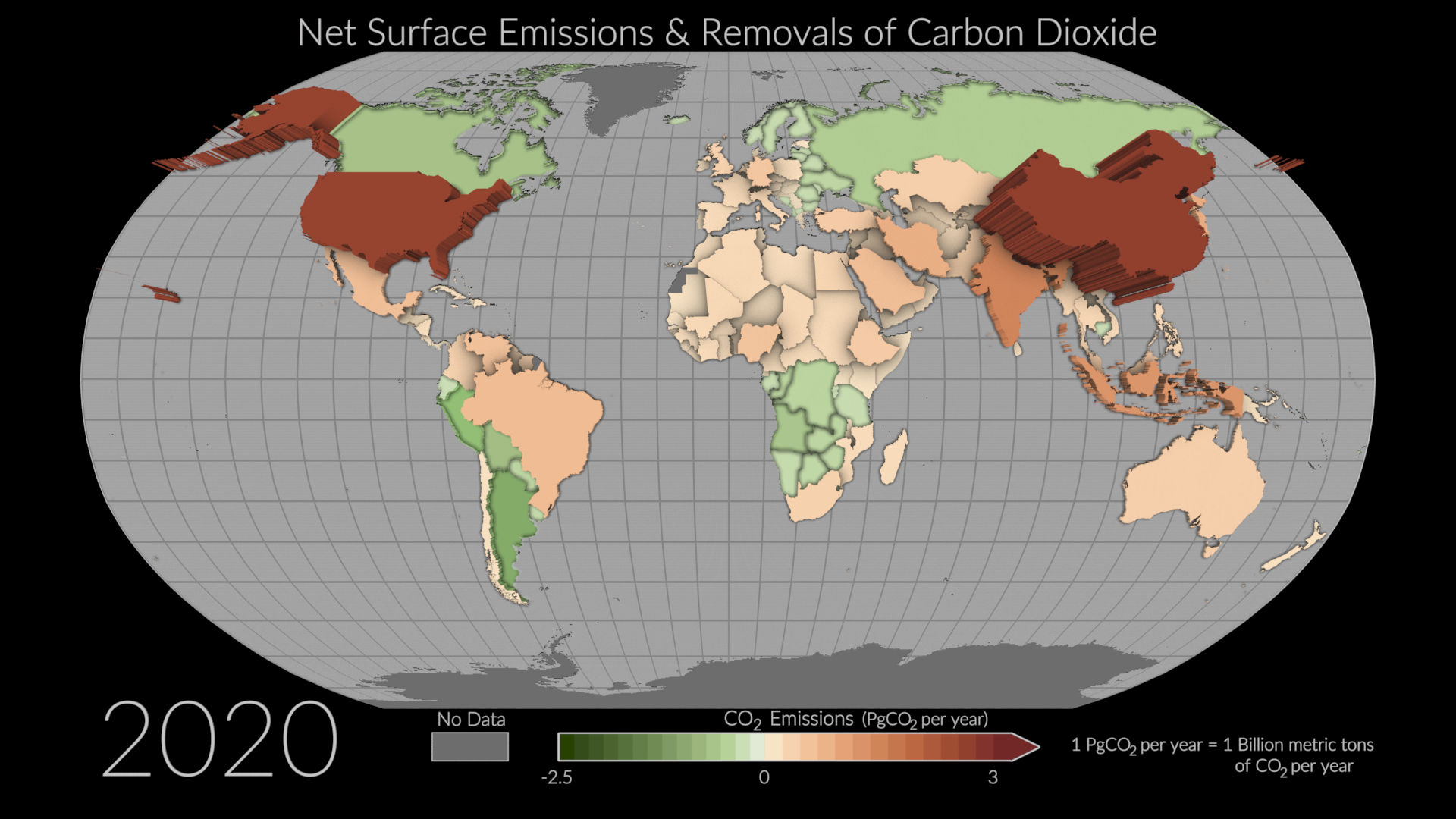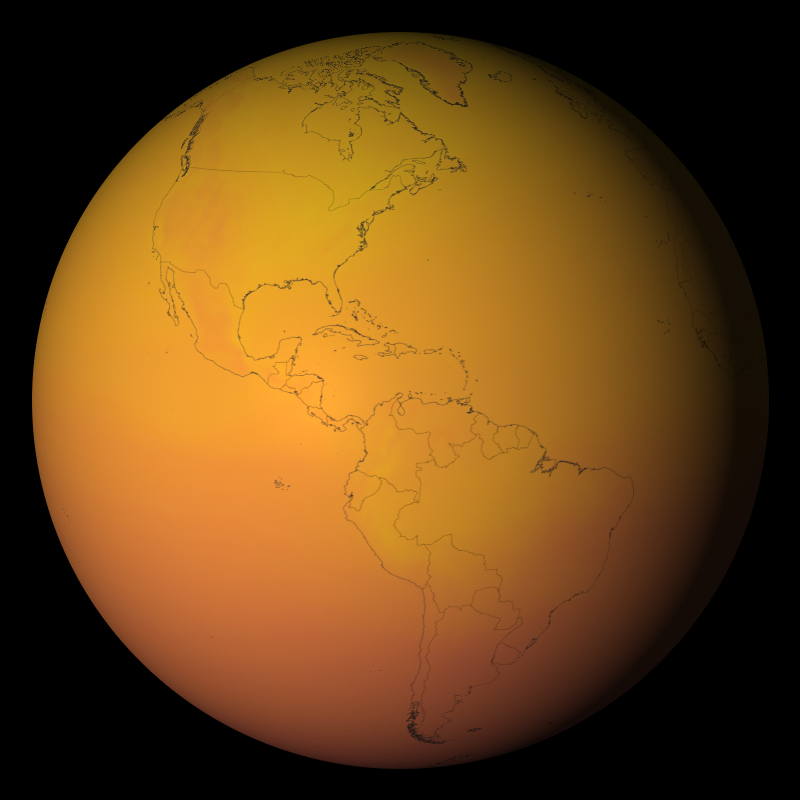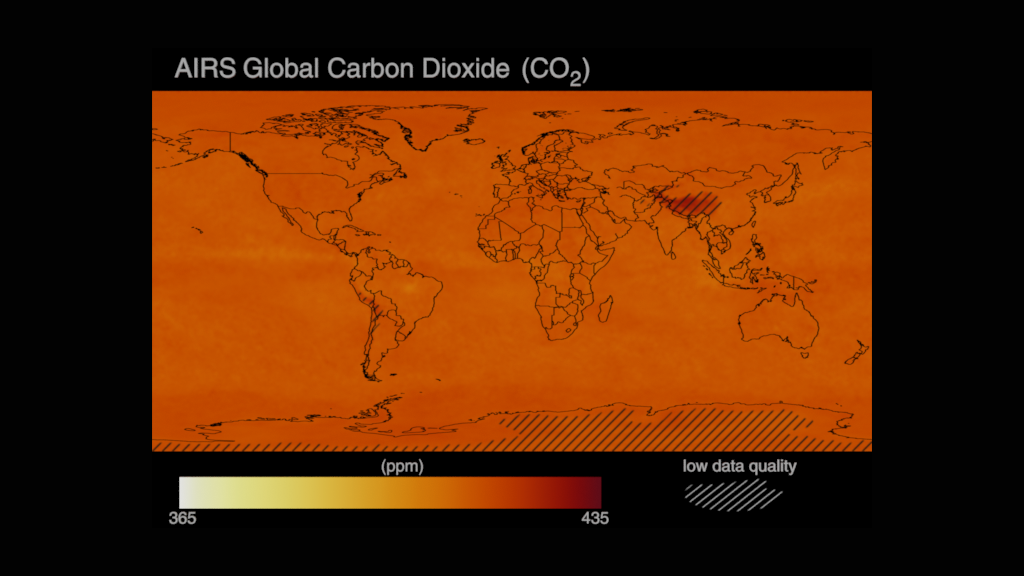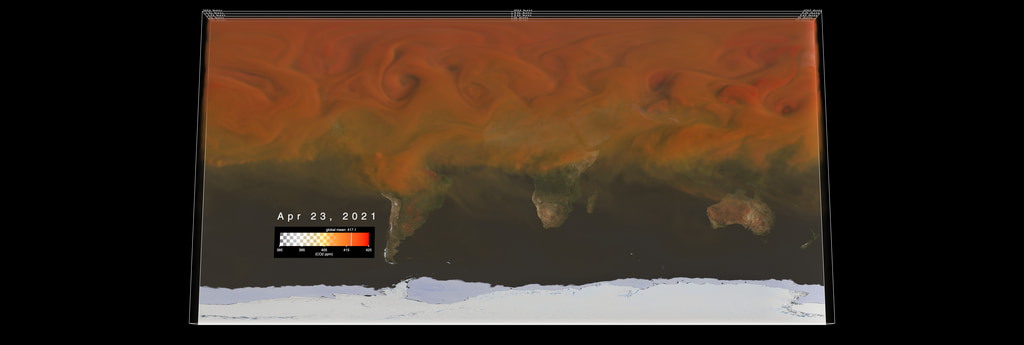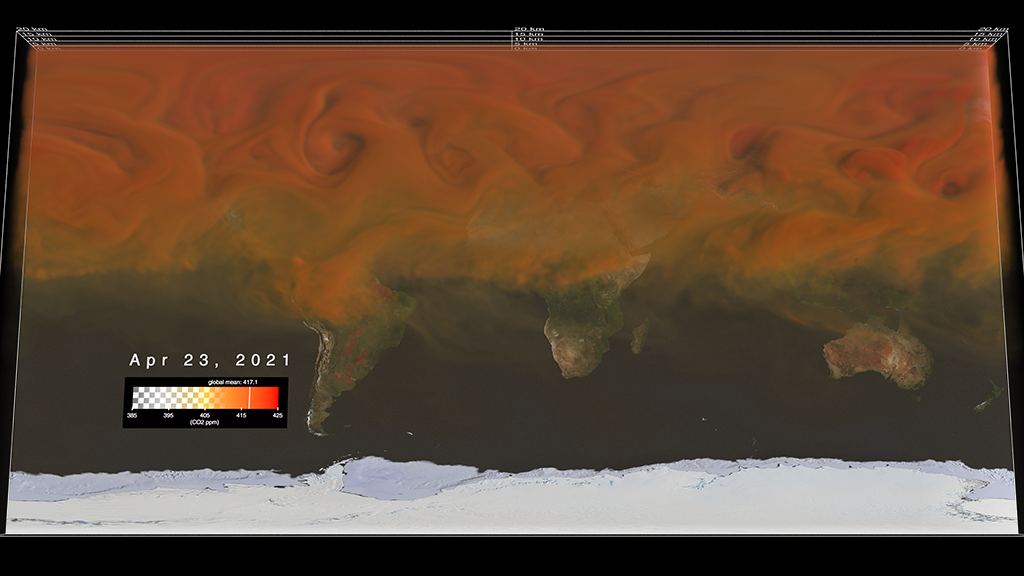Global Atmospheric Carbon Dioxide (CO₂)
Volumetric visualization of the total carbon dioxide (CO₂) on a global scale added on Earth's atmosphere over the course of the year 2021.
NASA’s Orbiting Carbon Observatory, 2 (OCO-2) provides the most complete dataset tracking the concentration of atmospheric carbon dioxide (CO₂), the main driver of climate change. Every day, OCO-2 measures sunlight reflected from Earth’s surface to infer the dry-air column-averaged CO₂ mixing ratio and provides around 100,000 cloud-free observations. Despite these advances, OCO-2 data contain many gaps where sunlight is not present or where clouds or aerosols are too thick to retrieve CO₂ data. In order to fill gaps and provide science and applications users a spatially complete product, OCO-2 data are assimilated into NASA’s Goddard Earth Observing System (GEOS), a complex modeling and data assimilation system used for studying the Earth’s weather and climate. GEOS is also informed by satellite observations of nighttime lights and vegetation greenness along with about 1 million weather observations collected every hour. These data help scientists infer CO2 mixing ratios even when a direct OCO-2 observation is not present and provide additional information on the altitude of CO₂ plumes that the satellite is not able to see. Together, OCO-2 and GEOS create one of the most complete pictures of CO₂.
The visualization featured on this page shows the atmosphere in three dimensions and highlights the accumulation of CO₂ during a single calendar year (January 1-December 31, 2021). Every year, the world’s vegetation and oceans absorb about half of human CO₂ emissions, providing an incredibly valuable service that has mitigated the rate of accumulation of greenhouse gases in the atmosphere. However, around 2.5 parts per million remain in the atmosphere every year causing a steady upward march in concentrations that scientists have tracked since the 1950s at surface stations.
The volumetric visualization starts in January 1, 2021, showing the higher CO₂ concentrations, which are closer to the ground, revealing the seasonal movement of high CO₂ at a global scale. During the months of June-September (summer months for northern hemisphere), global CO₂ concentrations tend to be lowest because northern hemisphere plants actively absorb CO₂ from the atmosphere via photosynthesis. During northern hemisphere fall and winter months, much of this CO₂ is re-released to the atmosphere due to respiration and can be seen building up. By June and July 2021, plants again draw CO₂ out of the atmosphere, but notably higher concentrations remain in contrast to the nearly transparent colors of the previous year. The diurnal rhythm of CO₂ is apparent over our planet's largest forests, such as the Amazon rainforest in South America and the Congo rainforest in Central Africa. The fast-paced pulse in those rainforests is due to the day-night cycle; plants absorb CO₂ during the day via photosynthesis when the sun is out, then stop absorbing CO₂ at night. In addition to highlighting the buildup of atmospheric CO₂, this visualization shows how interconnected the world’s greenhouse gas problem is. NASA’s unique combination of observations and models plays a critical role in helping scientists track increases in CO₂ as they happen to better understand their climate impact.
Visualization of the total carbon dioxide (CO₂) on a global scale added on Earth's atmosphere over the course of the year 2021 (without the timeline).
Spanish version of volumetric Carbon Dioxde (CO₂) from NASA's Global Modeling Assimilation Office, trends in atmospheric CO₂ featuring data from OCO-2 and the Mauna Loa Observatory paired with Earth's energy balance.
Volumetric Carbon Dioxide (CO₂) and Methane (CH₄) side-by-side on a global scale added on Earth's atmosphere over the course of year 2021.
Volumetric Carbon Dioxde (CO₂) from NASA's Global Modeling Assimilation Office, trends in atmospheric CO₂ featuring data from OCO-2 and the Mauna Loa Observatory paired with Earth's energy balance.
This timeline is synchronized with the atmospheric carbon dioxide visualization above to show temporal progress across the year.
Data Sources:
- Volumetric Carbon Dioxide extracted from NASA's Goddard Earth Observing System (GEOS) model, which is produced by the Global Modeling and Assimilation Office. The visualization featured on this page utilizes data for the period January 1 - December 31, 2021.
- Blue Marble: Next Generation was produced by Reto Stöckli, NASA Earth Observatory (NASA Goddard Space Flight Center). Citation: Reto Stöckli, Eric Vermote, Nazmi Saleous, Robert Simmon and David Herring.
The Blue Marble Next Generation – A true color earth dataset including seasonal dynamics from MODIS, October 17, 2005. The visualization on this page utilizes monthly Blue Marble data to map the water and land bodies around the globe and show seasonal changes. - Global 30 Arc-Second Elevation (GTOPO 30) from U.S. Geological Survey (USGS). GTOPO30 is a global raster digital elevation model (DEM) with a horizontal grid spacing of 30 arc seconds (approximately 1 kilometer). GTOPO30 was derived from several raster and vector sources of topographic information. The data-driven visualization featured on this page utilizes the GTOPO30 model to represent the three-dimensional features of over land terrain and submarine topography world-wide. doi:10.5066/F7DF6PQS.
Credits
Please give credit for this item to:
NASA's Scientific Visualization Studio
-
Visualizers
- Helen-Nicole Kostis (USRA)
- Andrew J Christensen (SSAI)
-
Scientists
- Lesley Ott (NASA/GSFC)
- Brad Weir (USRA)
-
Technical support
- Laurence Schuler (ADNET Systems, Inc.)
- Ian Jones (ADNET Systems, Inc.)
- Eric Sokolowsky (Global Science and Technology, Inc.)
Release date
This page was originally published on Tuesday, June 20, 2023.
This page was last updated on Sunday, April 28, 2024 at 11:29 PM EDT.
Missions
This visualization is related to the following missions:Datasets used in this visualization
-
GTOPO30 Topography and Bathymetry
ID: 274 -
BMNG (Blue Marble: Next Generation) [Terra and Aqua: MODIS]
ID: 508Credit: The Blue Marble data is courtesy of Reto Stockli (NASA/GSFC).
This dataset can be found at: http://earthobservatory.nasa.gov/Newsroom/BlueMarble/
See all pages that use this dataset -
GEOS Carbon Dioxide
ID: 962
Note: While we identify the data sets used in these visualizations, we do not store any further details, nor the data sets themselves on our site.
